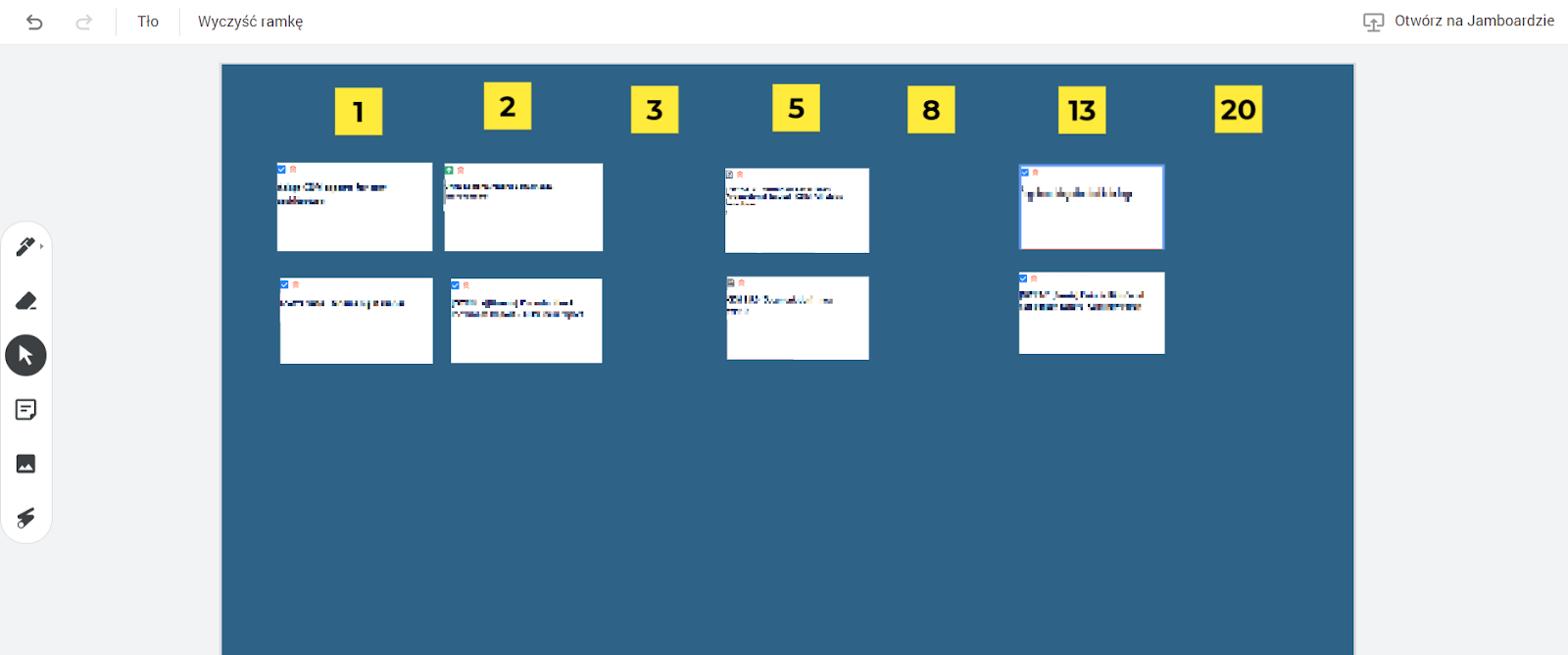Facilitating meetings online is very energy-consuming for a Scrum Master. When you don’t see people, you don’t see their non-verbal communication, so both questions and answers are being transferred via one single channel. You can’t ask a question face to face and elicit an immediate and often unconventional answer right away. Lack of live communication not only removes the chemistry from the relationship, people can’t feel each other anymore. Merely verbal online interaction does not reflect how people actually feel, think and act, which makes Scrum Master blindfolded but still forced the same challenges as before. Inevitably, something crucial might be overseen. What are we supposed to do in order to not throw the baby out with the bathwater while conducting a never-ending optimization and organizing the remote work?

First of all, keeping in mind that challenges are still to be faced, objectives to be achieved, expectations to be met does not only frighten but also mobilizes.
Questions
There are the questions Scrum Masters ask regardless of war and peace, life or death:
How do you (as a team) deal with the problem?
Question switch the team’s focus to finding the resolution. By asking a team about what they will do and how we show our colleagues: the resolution fully depends on their decisions. Therefore employee fellows feel involved in resolving a problem. Also, this question redirects responsibility for coming up with a resolution to the whole team, not merely to a single team member.
When can we ask this question?
Whenever any problem is present and we don’t see any reaction for it from the side of team members. Being a scrum master, in such a situation I can suspiciously anticipate that people don’t feel any commitment or maybe don’t have enough courage to deal with an issue. When I ask this kind of question I redirect responsibility to the team – that can help encourage single members.
Is the sprint goal endangered?
The question is focused on a very important thing, the goal of the sprint. I ask it when I suspect that work in sprint is going the wrong way and I want to verify it with the team. What’s means that the sprint goal is going to the wrong way? It can be many things, for example, when:
– I see that testers are waiting for work because many issues related to sprint goals are stuck in “to review column” and nobody seems to notice and care.
– I realize that a developer has caught three important tasks and tries to conduct all of them parallelly while justifying it the following kinds of “rock-solid” reasoning:
“They are bonded”, “they are relevant”, “these tasks are supposed to be done by one person, preferably at the same time”. The Scrum Master is ruminating: “What about wasting time multitasking?! Our brain in that mode is incapable of working efficiently”, “What personal obstacles are hidden behind behavioral patterns?”, “Are the tasks specified in the wrong way?”.
“In the 1st task, I am waiting for the response, in the 2nd I wait for task X because without it I cannot proceed to the next step, and in the 3rd I am waiting for the network connection” – As a Scrum Master, I thereby ask myself: “Waiting, waiting, waiting… it is the one of 7 main wastes in software development. Perhaps, we should take a look at it and consider how to prevent such a waste of time? ”.
The problems mentioned above have not disappeared with nowadays, while we live in the uncertainty of quarantine and work in the turbulence of remote work.
However, in every problem, there is an opportunity. Scrum Master is destined to spread the joy and share the enthusiasm. Nevertheless, in order to reignite the passion in the hearts of fellow employees, it is sometimes useful to get some privacy, detach oneself from the emotional flow in the team and see the big picture.
Tools
No challenge is too big and a quarantine might give you new skills of empowering teams using the following tools:
1. Jamboard on Gmail with connection via Google Hangouts allows us to perform Team Estimation Game in a similar way as in the office.

3. Google Docs can be used for retrospective to get insights from team members. Alternatively, during sprint refinement or sprint planning. I usually write an agenda for a retrospective on Google Docs. When the meeting starts I share my screen and introduce the plan of meeting.
4. If you have an empty wall in your room you can use electrostatic foil on it to make notes or visualization during your meeting and share the camera view with participants. Visualization helps us to understand spoken words faster. At this point it’s necessary to flip your camera view. Otherwise people will see your drawings / letters like in a mirror which makes it hard to understand. Why should one person be resposible for making notes? Making notes is not the purpose of the meeting. If everyone will be focused on making notes then the concentration on a goal will be violated. When one person is making and sharing the notes, it’s good point to check if we are on the same page. It’s especially important at times when there is a lack of full contact.
Relations
However, the team spirit is likewise not to be forgotten. During the isolation people don’t have the same level of contact with the teammates as they had in the office. How can we deal with it? How can we maintain relations on the same level? As a Scrum Master I try to bond people together in different ways:
– I encourage fellows to show their camera view on any meetings;
– I propose a team to work in a virtual room. I try to create the whole day hangouts meeting in the Google Calendar which serves as a room in the office. Team members can get closer when they share voice/video. Applying this idea can cause that questions/ problems will be resolved faster.
Why?
One of 12 Agile principles says that:
“The most efficient and effective method of conveying information to and within a development team is face-to-face conversation.”
Why do I agree with it? I believe that face to face communication establishes more trust than any other means of communication. Dialog via text channels (emails, slack, etc.) lacks emotions. We don’t see what is the non-verbal reaction for our words. We lose real contact which builds trust. Also, spoken communication is more efficient because there is a lower likelihood of misunderstandings or misinterpreting.
– I propose a coffee meeting at the same time every day. Given that we were doing it at the office, why can’t we keep up with it virtually? At this meeting we can chat about everything. We can use it to gain a better knowledge of each other’s personalities, interests, and family. Everyone is in a place when they live so this is the occasion to share more pieces of our lives with teammates. Or maybe we can play something together? Some wordplays for example: telling weird stories about the objects in the apartment or making story chains. Alternatively, we can use Jamboarad for short puns session. It can be funny 🙂
Ideas described in this article are probably a drop in the sea of concepts. When we are standing in the room without an exit a creativity increases in our mind. We see the ways that in other situations we perceive as impossible or not efficient. That’s really entertaining: how powerful our mind is while we are nearing the dead end.
The words from the “Alice in Wonderland” now sound in my head:
“To make the impossible you must believe that it is possible.”


Awesome start!